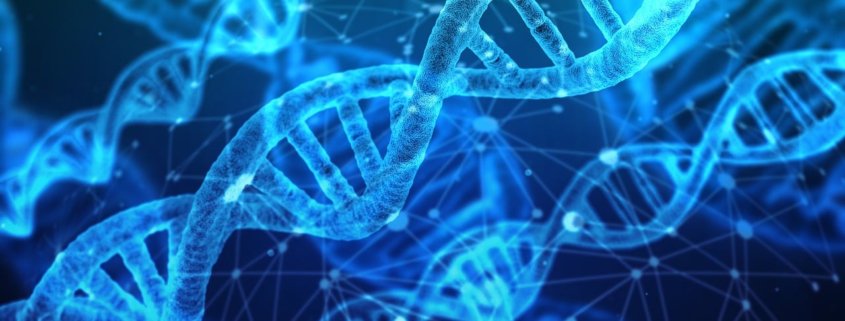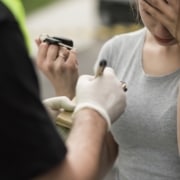The Impact of DNA Phenotyping in Criminal Investigations
The field of criminal investigation has witnessed a groundbreaking advancement in recent years – DNA phenotyping. This innovative technique holds the potential to reshape the way law enforcement agencies approach solving crimes and identifying suspects. As Alabama integrates DNA phenotyping into its investigative toolkit, it is important to understand the profound impact this technology can have on the criminal justice system. Having an accomplished criminal defense attorney on your side can help you protect your legal rights while obtaining the best possible outcome during a trial.
What is DNA Phenotyping?
DNA phenotyping is a cutting-edge technology that allows forensic experts to predict an individual’s physical appearance based on their DNA. By analyzing specific genetic markers associated with traits like eye color, hair color, and facial features, law enforcement can generate composite sketches of potential suspects, providing investigators with an invaluable tool for identifying individuals who may otherwise remain elusive.
The Impact of DNA Phenotyping on Alabama Criminal Investigations
In Alabama, DNA phenotyping is making significant contributions to criminal investigations, enhancing the accuracy and efficiency of solving crimes.
- Cold Case Resolutions: DNA phenotyping has helped breathe new life into cold cases that remained unsolved for years. By creating images of suspects, law enforcement can generate fresh leads and reignite investigations that have reached dead ends.
- Suspect Identification: Traditional methods of identifying suspects often rely on witness descriptions, which can be unreliable. DNA phenotyping provides a more objective and accurate means of narrowing down potential suspects.
- Victim Identification: In cases where victims’ identities are unknown, DNA phenotyping can aid in revealing vital information about their physical appearance, facilitating identification efforts, and helping bring closure to families.
- Composite Sketches: DNA phenotyping provides investigators with composite sketches that can be shared with the public, allowing communities to assist law enforcement in locating suspects. This collaborative approach enhances community engagement in solving crimes.
- Reducing Bias: Unlike witness descriptions, DNA phenotyping is not influenced by human biases or memory inaccuracies. This can lead to more objective and accurate suspect identifications.
- Public Safety: By identifying potential suspects more accurately and quickly, DNA phenotyping contributes to the overall safety of communities, helping law enforcement apprehend individuals who may pose a threat.
Can DNA Phenotyping be Used for Proving Guilt in Alabama Courts?
DNA phenotyping involves predicting physical traits based on an individual’s DNA, such as eye color, hair color, and facial features. It’s probabilistic in nature and doesn’t provide concrete evidence. In criminal proceedings, the standard for proving guilt beyond a reasonable doubt is typically very high.
DNA phenotyping predictions, which rely on probabilities and statistical likelihoods, might not meet this high standard on their own. While DNA evidence, such as traditional DNA matching or forensic evidence can play a significant role in establishing guilt, DNA phenotyping is generally regarded as a tool for generating leads and composite sketches rather than providing definitive proof.
Be prepared to get a highly-rated criminal defense attorney on your side with the ability to challenge the evidence presented by a prosecutor determined to pursue a conviction.
Challenging DNA Phenotyping Evidence
Criminal defense lawyers can employ a range of strategies to challenge DNA phenotyping evidence presented by the prosecution. Here are some key arguments that defense attorneys might use:
Scrutinizing Scientific Validity and Reliability:
- Challenge the scientific accuracy and reliability of DNA phenotyping technology. Highlight potential sources of error, limitations, and instances where predictions have been demonstrated to be inaccurate.
- Collaborate with expert witnesses who can provide a critical analysis of the technology’s scientific basis.
Addressing the Speculative Nature of Predictions:
- Emphasize that DNA phenotyping predictions are speculative and probabilistic. Unlike traditional DNA analysis that definitively links a suspect to evidence, phenotyping offers only probabilities about physical traits.
- Argue that this speculative nature might not meet the standards of concrete evidence required in criminal cases.
Highlighting the Lack of Individualization:
- Argue that DNA phenotyping does not provide individualized identification. Unlike traditional DNA analysis that directly matches a known DNA sample to a specific individual, phenotyping generates predictions based on population-level data.
- Point out that such predictions might not definitively link a suspect to a crime scene
Raising Concerns of Bias and Fairness:
- Question the possibility of bias in DNA phenotyping algorithms, potentially leading to predictions that unfairly associate certain physical traits with specific demographics.
- Argue that relying on such predictions might perpetuate stereotypes and infringe on a defendant’s right to a fair trial.
Exploring Alternative Explanations:
- Present alternative explanations for the presence of your DNA at a crime scene. Highlight that a predicted physical trait matching a crime scene’s description does not establish guilt.
- Stress the importance of exploring all potential explanations, as DNA could have been innocently transferred.
Evaluating Privacy and Consent:
- Examine the legality and proper consent in collecting DNA samples for phenotyping. Challenge any potential violations of your Fourth Amendment rights against unreasonable searches and seizures.
Questioning Relevance:
- Argue that DNA phenotyping evidence may lack direct relevance to the case.
It is important to note that the effectiveness of these defense strategies can vary depending on the specific circumstances of each case and the jurisdiction’s legal standards. It takes a capable defense attorney to create arguments that best address the unique challenges posed by DNA phenotyping evidence in the context of their client’s case.
Choose the Most Results-Driven Criminal Defense Law Firm
At Alsobrook Law Group, our seasoned criminal defense attorneys understand that a successful defense requires an in-depth knowledge of relevant laws, a competent legal team, and resources to work with the best expert witnesses. Whether through negotiation, innovative defense strategies, or tireless advocacy, we’re here to defend your rights and fight for your future. Schedule your free case review with our lawyers today. Call us at 334-360-9534 or reach us online.
















